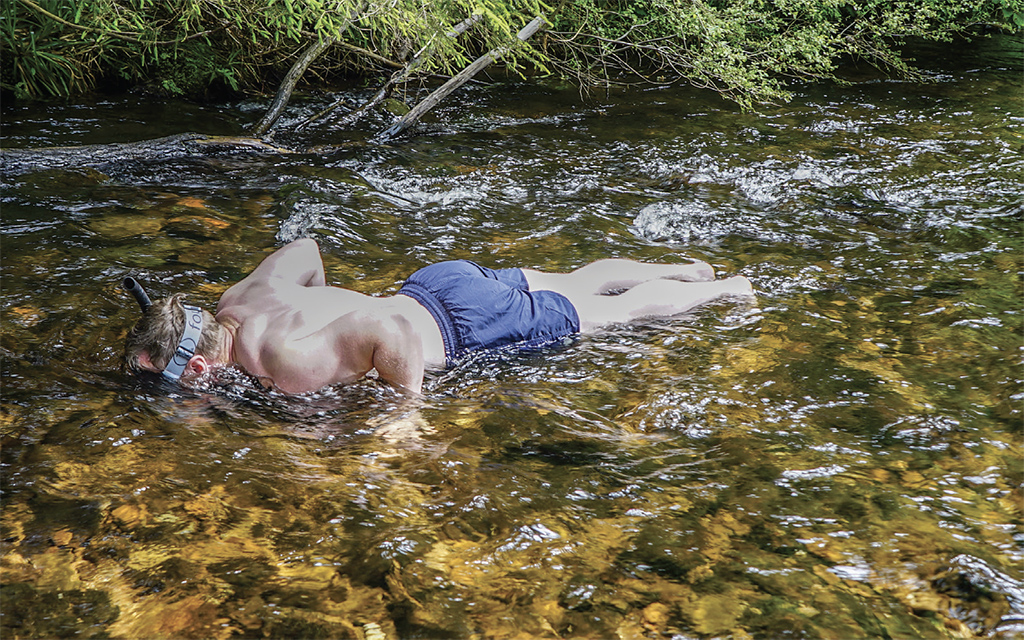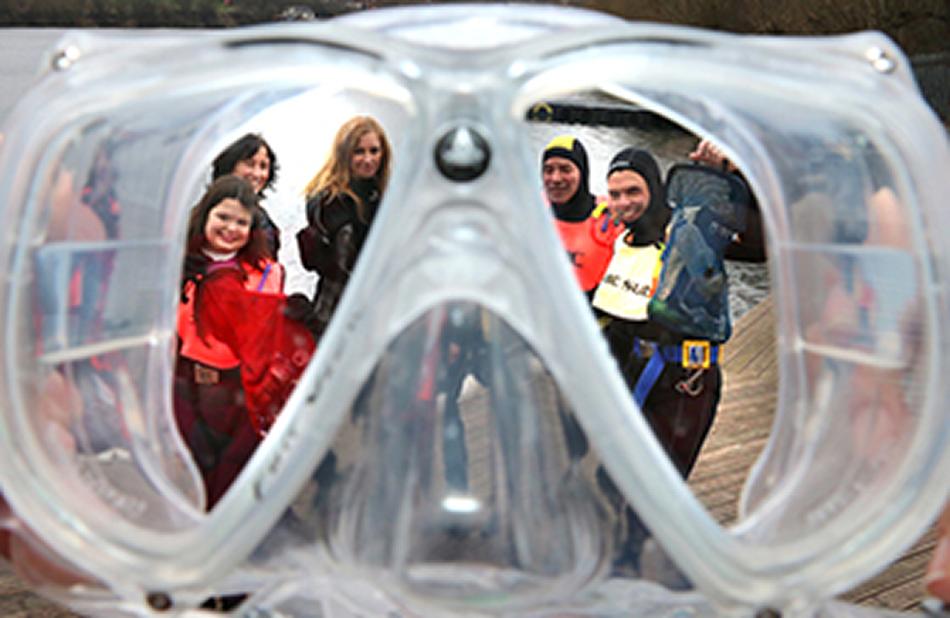
In an effort make a point to his sons, Andy Torbet carries out an unusual experiment deep in a German forest.
I’ve been asked, and may even have written about how deep you have to go before your dive is no longer classed as snorkelling. It’s a difficult one, so I’ll take the easy way out and riposte with a counter-question – how shallow can you go and the dive still be considered a snorkel?
I recently returned from a camping holiday, our preferred format for family sojourns, to The Black Forest National Park in Germany. I can thoroughly recommend it for hiking, waterparks, beautiful market towns, a to-the-second accurate bus service, sausages and beer. However, it’s not renowned, with good reason, for its dive spots.
I did try and jump in a couple of the clearer, although extremely cold, woodland lakes. We all trekked up into the heavily wooded hills, following the streams and waterfalls to the lakes. But, even with my smattering of German learned in the Army and barely stretching beyond ordering a round in the pub, it was clear from the numerous signs that swimming was verboten. Clearly, the German tourists around the lake were unlikely to turn a blind eye to my trespassing.
However, a small stream flowed past the back of our camping pitch and the boys spent many an hour playing in it, just as small boys should. And I had not transported my mask and snorkel all the way to Baden-Wurtlemberg for nothing. So, I decided to take a dip.
I did it for the boys. It’s good for kids to see adults having fun and adventures. Kids don’t do what they’re told; they do what they see
The waters were, to say the least, bracing. Accordingly, I opted for the multi-dive plan with plenty of surface interval to rewarm in the sun. The maximum depth was hard to establish as my dive computer seemed convinced I’d never left the surface. But I did, lying face-down on the stream bed, manage to get my ears submerged... so let that be our gauge.
It was a bit of fun; I saw a couple of small fish and not much else. However, the water was remarkably clear and better than the strongest coffee to wake me up and get the blood flowing. I remember scrambling out on frozen limbs, the only consequence an apparent inability to stop smiling. I also did it for the boys. It’s good for kids to see adults having fun and adventures. Kids don’t do what they’re told; they do what they see. But mainly I did it to make a point. Snorkelling, and therefore diving, is irrespective of depth. Beyond the logical limitations of our certification, there is no natural depth limit to diving, whether we go up or down.
And often the best life, the best visibility and light is all at the top. We may think of snorkelling as wetsuits and fins and weight-belts and swimming out to sea, but really it’s sticking our heads underwater and having a look around. I’ve encouraged people to ‘snorkel’ with only a pair of goggles. Once they move from playing on the surface to looking underneath it, a whole new world opens up.
Then they can upgrade to all the high-tech fancy snorkelling kit… such as a plastic tube. A lot of my top snorkels were had without leaving the surface; rock pools have proven to be incredible places to snorkel, even if that’s meant kneeling on the side and just sticking my head underwater. Yes, I’ve duck-dived into shipwrecks at 20m, through cave systems and on deeper reefs but there is still much to be said for the top 10cm. Remember the underwater world doesn’t start at 100m or 30m or even 10m. It starts at the waterline.
Article 'Black Forest shallow' by Andy Torbet first published in SCUBA magazine, Issue 148 September 2024.
Go snorkelling!
Learn more on snorkelling with BSAC. Looking to introduce snorkelling into your club? Find out more at bsac.com/snorkellinginstructor

 Author: Andy Torbet | Posted 28 Aug 2024
Author: Andy Torbet | Posted 28 Aug 2024



